Charles Darwin Google Doodle: His 200th Birthday
Charles Darwin 200th Birthday Google Doodle
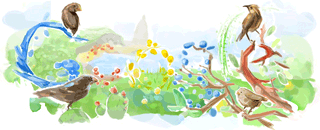
Visitors to the Google homepage on February 12th 2009, found that the search engine’s traditional logo had been temporarily replaced by a Charles Darwin Google Doodle. The Charles Darwin Google Doodle depicted a watercolour styled sketch, which depicted cliffs, grass and the sea. In addition the Charles Darwin Google Doodle also featured four Galapagos finches. The Charles Darwin Google Doodle was created in order to commemorate what would have been his 200th birthday. In an accompanying blog, the Google Doodle team explained that in the Charles Darwin Google Doodle the Galapagos finches had been included as these birds provided Darwin with the inspirational thought which later resulted in his theories of evolution by natural selection.
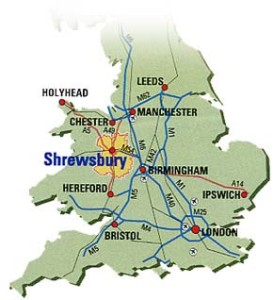
Charles Darwin was born in the riverside town of Shrewsbury, in Shropshire, on February 12th 1809. His father, Robert Darwin, was a wealthy doctor and financier, who was married to Susannah Darwin. The couple had six children, Charles was their fifth child. Darwin was the grandchild of two leading abolitionists, his father’s father, Erasmus Darwin and his mother’s father, Josiah Wedgwood. Darwin had developed an interest in natural history by the age of eight, when he joined a local school run by the local Unitarian Minister. However, following the death of his mother, which occurred in July 1817, he was enrolled as a boarder, with his brother Erasmus, into the local Anglican Shrewsbury School.
Darwin’s last summer before university, 1825, was spent helping his father treat the afflicted poor of Shropshire, as an apprentice doctor. He joined the University of Edinburgh Medical School later that year. Despite Edinburgh being the best medical school in the UK, Darwin quickly found himself becoming bored with the lectures and was distressed by surgery. As a result, he began to neglect his studies, much to the frustration of his father.
In reaction to Darwin’s neglect of his studies, his father sent him to Christ’s College at the University of Cambridge in order to become an Anglican pastor. Whilst here he was equally as uninterested in his studies as he had been in Edinburgh and pursued his preferred pastimes of shooting and riding. Whilst at Cambridge he became interested in the extremely popular trend of collecting beetles, as a result of his passion some of his findings were published in James Francis Stevens’ “Illustrations of British Entomology”. In the results for his final examination at Cambridge, Darwin did exceptionally well, gaining the tenth best results out of his peer group of 178 students.
After graduating, Darwin embarked on a geology fieldtrip with Adam Sedgwick. The fieldtrip aimed to create maps of the strata composition in Wales. Darwin returned home on August 29th 1831, to find a letter inviting him to join the second voyage of HMS Beagle. Darwin’s invitation was for a self-funded position, initially his father felt the two year trip to be a waste of time. However, Robert Darwin was persuaded by Charles’ brother in law Josiah Wedgwood to fund the trip.
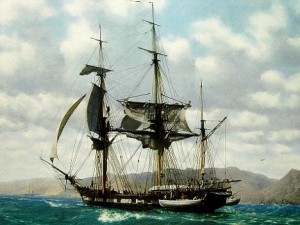
The trip faced initial delays and did not commence until December 27th 1831. Instead of the proposed two years the voyage was to last the best part of five years.
Darwin spent most of his time during the trip collecting and creating natural history collections, whilst recording the local geology. The Beagle and her crew surveyed and chartered the coasts around South America.
When The Beagle stopped at Brazil, Darwin was awed by the sight of the tropical rainforest however he was disgusted at the sight of slavery. The ship continued its voyage around the South American coast and stopped once again at Bahia Blanco, in modern day Argentina. Whilst here, Darwin discovered the fossilised remains of a number of huge mammals among seashells. These remains demonstrated to Darwin the recent extinction of these animals, despite there being no catastrophe or notable changes in their climate. Among the fossilised remains, Darwin found a tooth which he was able to identify as belonging to the previously obscure, Megatherium. When Darwin’s finds reached England they produced much interest.
The voyage of HMS Beagle continued to the Galapagos Islands. Here Darwin observed mockingbirds which were similar to those he had seen in Chile, however these birds differed slightly from island to island. He was informed that the shape of tortoise’s shells differed slightly depending on the creature’s island of origin, but was unable to collect these shells. After finishing at the Galapagos Islands, HMS Beagle began its slow journey back to England, stopping at Australia, the Cocos Islands, The Mauritius Islands and South Africa during the homeward voyage.
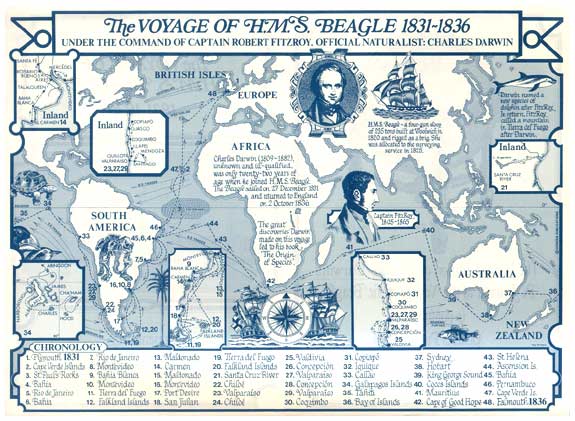
Upon his return from The Beagle voyage on October 2nd 1836, Darwin had already gained celebrity status among England’s scientific circles. By mid-December, Darwin returned to Cambridge in order to rewrite his Journal. This work resulted in the publication of his paper in which he demonstrated the landmass of South America was gradually rising. On January 4th 1837, Darwin presented his animal and bird findings to the Zoological society. On the strength of his findings, Darwin was elected as a member of the Council of the Geological Society.
Darwin proposed to his first cousin Emma Wedgwood on November 11th 1838, she accepted the proposition. The couple were married on the 29th of January the following year. The ceremony took place in Maer, in Staffordshire. Following the ceremony the newlyweds immediately caught the train to their new home in London. The couple had ten children, two of which died in their infancy and their daughter Annie died at the age of ten. Each time his children became ill, Darwin feared it was a consequence of inbreeding due to the close family ties he shared with his wife and cousin. However, despite his fears, many of his children went on to have distinguished careers, with three of his sons becoming members of the Royal Society due to their accomplishments in astronomy, botany and civil engineering.
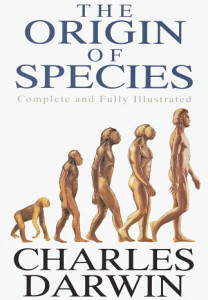
Darwin’s most famous work, “The Origin of Species”, went on sale on November 22th 1859. The book proved to be overwhelmingly popular. Although popular, the book received mixed reviews and was the centre of much controversy. Darwin furthered the theories he had put forth in The Origins of Species in a later book entitled, “The Descent of Man, and Selection in Relation to Sex”. The book was published in 1871. In The Descent of Man, Darwin put forth a number of theories in which he suggested that humans are animals, a theory which is widely accepted today.
Charles Darwin died on April 19th 1882, aged 73. Physicians of the time attributed his death to heart failure. Darwin was unafraid of death as revealed by his last words to his wife Emma, “I am not the least afraid of death- Remember what a good wife you have been to me” he said. “Tell all my children to remember how good they have been to me”. Darwin initially intended to be buried at a plot in St. Mary’s churchyard in Downe. However, after public and parliamentary partitions from his friends and colleagues, he was buried in Westminster Abbey close to Sir Isaac Newton.
Charles Darwin is not the first scientist to paid tribute to with his achievements with a Charles Darwin Google Doodle. Other scientists who have received Google Doodles include, Sir Isaac Newton, Nikola Tesla and Leon Foucault.
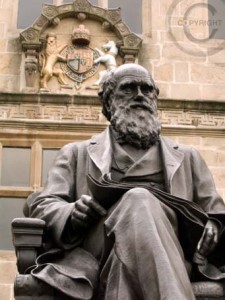
The Charles Darwin Google Doodle Statue in Shrewsbury
